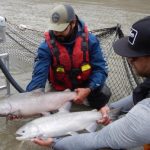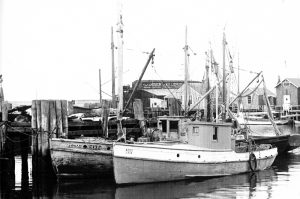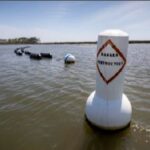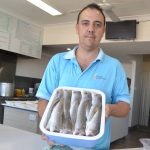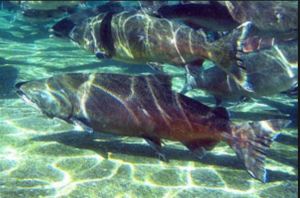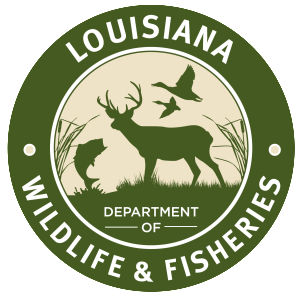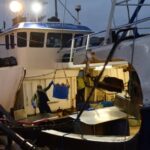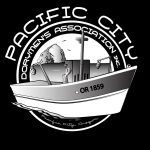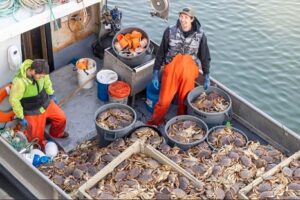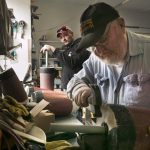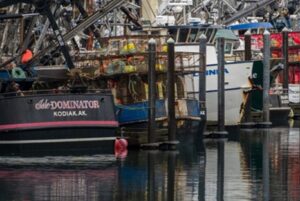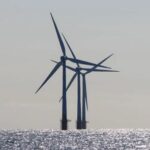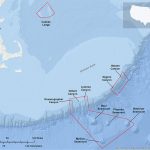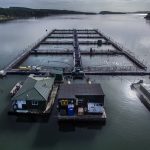Daily Archives: June 1, 2017
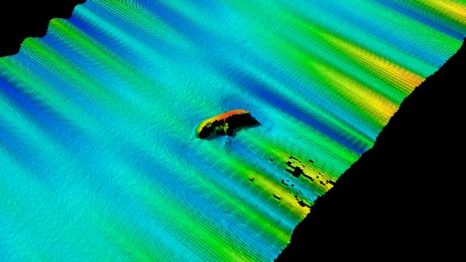
Where is the lost fishing boat Tammy? Two wreck hunters think they know.
Calm seas and clear weather greeted the fishing boat Tammy as it set out from San Pedro on July 11, 1994, to cast its nets for sea cucumbers — and then disappeared. The 40-foot, steel-hulled vessel carried a crew of four Vietnamese fishermen that night. Two of their bodies were found the next day in the shipping lanes off Newport Beach. The others were never recovered. “To this day, we do not have even a death certificate for my dad because they never found him,” Thai Minh Ta said of Cong Minh Ta, the boat’s owner. Now, more than two decades later, two men with extensive experience in researching and identifying submerged wrecks think the long-lost fishing boat might rest on the ocean floor in 70 feet of water near the entrance to the Port of Long Beach. click here to read the story 20:10
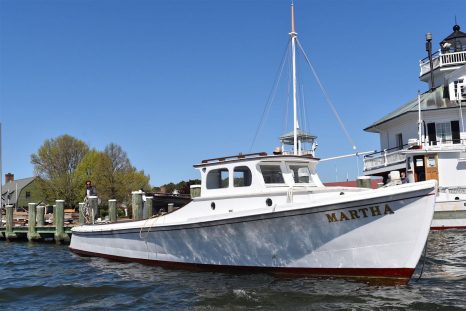
CBMM’s floating fleet gets a spring spruce up
Under the guidance of Chesapeake Bay Maritime Museum Shipwright James DelAguila, the maintenance season for CBMM’s floating fleet of historic vessels once again is in full swing, with all work done in full public view. As is typical this time of year, work proceeds with the most-used and popular vessels, including the 1920 buyboat Winnie Estelle, which received some system upgrades and a fresh coat of paint, thanks to CBMM’s dedicated volunteers and staff. The Smith Island crab scraping replica Volunteer and crab dredger Old Point each are receiving minor carpentry repairs, along with fresh coats of paint in advance of their busy seasons. click here to read the article w/2 more images 18:30
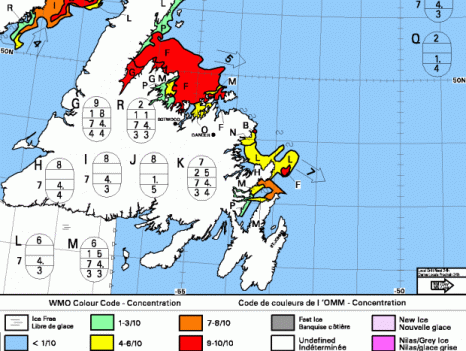
Twillingate fishery stuck in ice, shrimp plant future uncertain
A pair of dark clouds loom over the fishery in Twillingate, and good weather might improve only one of them. Long-lasting sea ice has put a chill on traffic at the town’s wharf, meaning less work for dockhands and a slump at the town’s grocery stores. That ice might also be part of the reason why plant workers are still searching for answers about their shrimp processor. The town hasn’t seen ice last this long for decades, according to Gord Noseworthy, mayor and harbour master. “This time last year, where all your boats is coming and going, you looked up there and there was eight and nine tractor trailers out there at a time, all taking full loads and going.” The town’s grocery stores, oil companies and liquor store have also been feeling the pinch,,, the future of the shrimp plant is not so certain. click here to read the story 17:27
11th International Conference and Workshop on Lobster Biology and Management
 The 11th International Conference and Workshop on Lobster Biology and Management is taking place June 4-9 in Portland, ME. The agenda and related event listings are available click here The final full program and abstract booklet is posted here as a downloadable pdf file. This file has been updated since the program went to print, so it has the most up-to-date list of attendees and abstracts. 16:16
The 11th International Conference and Workshop on Lobster Biology and Management is taking place June 4-9 in Portland, ME. The agenda and related event listings are available click here The final full program and abstract booklet is posted here as a downloadable pdf file. This file has been updated since the program went to print, so it has the most up-to-date list of attendees and abstracts. 16:16
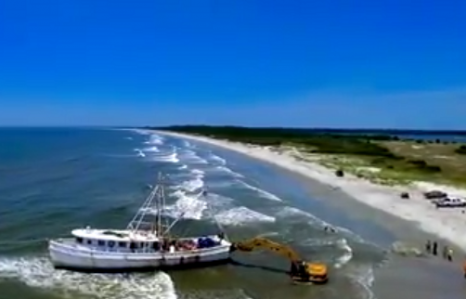
Beached shrimp boat removed from North Carolina’s Bird Island
David Bartenfield first learned to sail when he was 12 years old and has continued to do so for over 40 years. Over Memorial Day weekend, he saw something on North Carolina’s Bird Island he probably won’t forget anytime soon – a shrimp boat beached on the shore. Over Memorial Day weekend, he saw something on North Carolinas Bird Island he probably won’t forget anytime soon, a shrimp boat beached on the shore. According to Chris Humphrey, a civilian controller with the U.S. Coast Guard in North Carolina, the boat was beached on May 25 after it lost power and ran ashore. Video, click here to read the story 15:19 Here is a great collection of image’s and video of the Miss Carolyn Ann thanks to Bill Keziah, click here
Coast Guard concerned about drug crisis – Personnel receive training from drug-recognition experts
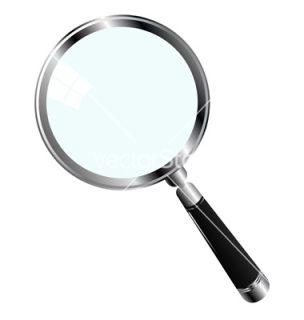 The addiction crisis is also affecting New England by sea, and the U.S. Coast Guard is trying to get ahead of the problem in the maritime industry. Crews at U.S. Coast Guard Sector Northern New England headquarters, in Portland, Maine, oversee search and rescue, safety and marine environment issues along the Maine and New Hampshire coastlines, along with Lake Champlain in Vermont and part of New York, too. The addiction crisis has also become a key focus for the military branch. The main reason for boarding fishing vessels and pleasure boats has been to make sure they’re operating safely, but crews also check for signs of impairment. Now, in addition to alcohol, personnel are getting training from drug-recognition experts. click here to read the story 12:11
The addiction crisis is also affecting New England by sea, and the U.S. Coast Guard is trying to get ahead of the problem in the maritime industry. Crews at U.S. Coast Guard Sector Northern New England headquarters, in Portland, Maine, oversee search and rescue, safety and marine environment issues along the Maine and New Hampshire coastlines, along with Lake Champlain in Vermont and part of New York, too. The addiction crisis has also become a key focus for the military branch. The main reason for boarding fishing vessels and pleasure boats has been to make sure they’re operating safely, but crews also check for signs of impairment. Now, in addition to alcohol, personnel are getting training from drug-recognition experts. click here to read the story 12:11
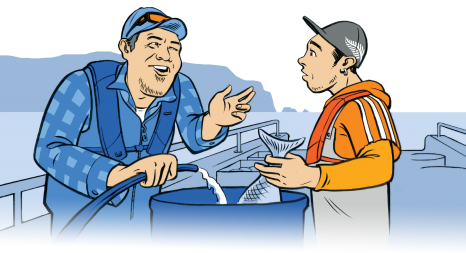
Fishing safety campaign launched in New Zealand
On June 1st, Maritime New Zealand and the NZ Federation of Commercial Fishermen launch a safety campaign, at the Federation’s annual conference, aimed at commercial fishing boat crews and operators. The “Safe Crews Fish More” aims to establish a natural collaboration across the industry. Maritime NZ General Manager Maritime Standards, Sharyn Forsyth, said more than one in four fishing crew are injured every year (28% according to a study by research company, Neilsen, commissioned by WorkSafe and Maritime NZ). ACC statistics show most injuries are to hands, lower back, and spine. The campaign will initially run for a year, focusing two months at a time on the six risk areas: fatigue, manual handling, safety on deck, winches, uncovered machinery, and intoxication. click here to read the story 11:52

Survival Story: 438 Days Lost At Sea adrift in the Pacific Ocean
Great lessons of survival come along with extreme and life changing experiences. What would a 14 months drift on the ocean mean in terms of survival? Salvador Alvarenga knows it, for sure!
Alvarenga survived 438 days adrift in the Pacific Ocean, drifting 7000 miles from just off Mexico, to the Marshall Islands. His open 24′ fiberglass boat was disabled in a storm and nearly all his gear was swept overboard, disabled or had to be cut loose to keep the boat from sinking. His story is way beyond ordinary, and now he’s sharing it in this exclusive interview for Survivopedia readers. At first glance, I must admit that I was somewhat skeptical. In my mind, this feat pushed the boundaries of what I thought was possible. Either way, I wanted to know. As I researched, read, interviewed and analyzed his ordeal at sea, I grew increasingly convinced that his story true. As you can plainly see in the video interview below, it is difficult for him to talk about the experience to this day. click here to watch video, read the story 11:21
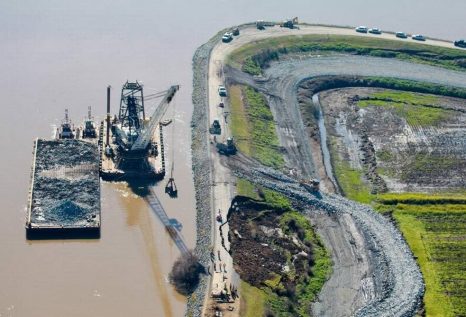
Jerry Brown sends a message to water agencies on the Delta tunnels – and it’s direct
Jerry Brown took an Old English turn from his Latin wisdom in 2012 by declaring: “I want to get s— done,” a reference to his vision for building two tunnels 30 miles long to move Sacramento River water south from the Delta to the rest of the state. And in 2015, addressing California water agencies, he offered pithy advice to naysayers: “Until you put a million hours into it, shut up.” Critics of the $15 billion project were greatly offended. “Two 40-foot diameter tunnels that can take the entirety of the Sacramento River at most times of the year of just seems like a bad idea to salmon fishermen,” said John McManus, executive director of the Golden Gate Salmon Association. “Rank-and-file salmon fishermen don’t trust them when they say, ‘Trust us.’ ”
There’s an element of hypocrisy on the part of Bay Area environmentalists, who drink water piped from Hetch Hetchy. Delta interests have all the water they could possibly want. But the fishing industry has a real beef. Dams deplete salmon runs. click here to read the story 10:45
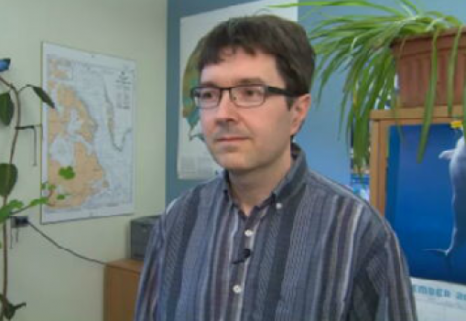
Industry has too much sway in Marine Protected Areas, says scientist
After a decade of deliberation, an ecologically sensitive area in the Laurentian Channel in the Gulf of St. Lawrence is entering the final stage of Marine Protected Area (MPA) status approval.
But Rodolphe Devillers, a geography professor at Memorial University who specializes in marine conservation, is skeptical about just how much protection the designation will provide. At just under 12,000 square kilometres, the Laurentian Channel Marine Protected Area will be the largest in Canada, and the third protected area in Newfoundland and Labrador. It falls between Cape Breton and Newfoundland’s southern shore, along the edge of the 3PS fishing zone.,,, But Devillers said the industry has far too much influence on the establishment of these areas. click here to read the story 09:35
Kodiak Sockeye Season Opens Early on June 1
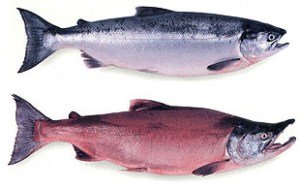 Kodiak’s commercial sockeye salmon season gets off to a bang tomorrow (today). Already this week has far exceeded expectations, with Monday setting an all time record for sockeye past the Karluk weir. On Monday, a whopping 46,000 fish hit the river, prompting fish and game biologists to reconsider the numbers and open the season early on June 1. Alaska Department of Fish and Game Kodiak Commercial Salmon Area Biologist James Jackson explains that island-wide commercial opening is based on activity at specific rivers. “In June around Kodiak the majority of the commercial salmon fisheries are managed based on the local sockeye runs. And the four big sockey runs are Karluk, Ayakulik (eye-ah-cue-lick) Upper Station and Frazier.” The biggest of those is usually the Karluk River. “And Karluk early run has come in like a bang this year,,, click here to read the story 08:23
Kodiak’s commercial sockeye salmon season gets off to a bang tomorrow (today). Already this week has far exceeded expectations, with Monday setting an all time record for sockeye past the Karluk weir. On Monday, a whopping 46,000 fish hit the river, prompting fish and game biologists to reconsider the numbers and open the season early on June 1. Alaska Department of Fish and Game Kodiak Commercial Salmon Area Biologist James Jackson explains that island-wide commercial opening is based on activity at specific rivers. “In June around Kodiak the majority of the commercial salmon fisheries are managed based on the local sockeye runs. And the four big sockey runs are Karluk, Ayakulik (eye-ah-cue-lick) Upper Station and Frazier.” The biggest of those is usually the Karluk River. “And Karluk early run has come in like a bang this year,,, click here to read the story 08:23

































